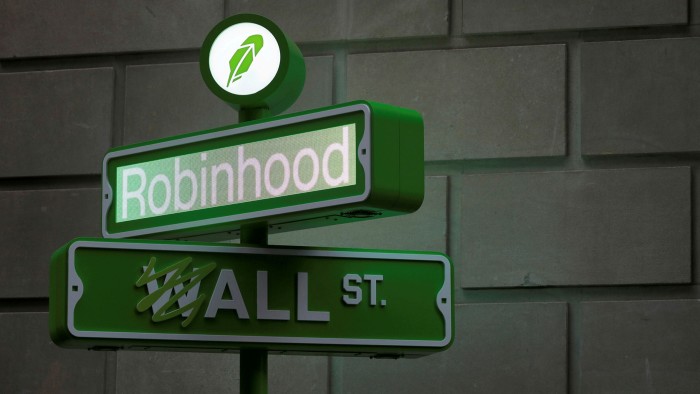Welcome to the great speculative era

Roula Khalaf, Editor of the FT, selects her favourite stories in this weekly newsletter.
The writer is a financial journalist and author of ‘More: The 10,000-Year Rise of the World Economy’
In popular accounts of the South Sea Bubble in the early 18th century, one tale is often told. A dodgy company that was launched in that era was described merely as “an undertaking of great advantage but nobody to know what it is”. The story is, alas, apocryphal. But step forward three centuries and the financial sector has delivered the real thing.
In 2020 and early 2021, Wall Street was flooded with special purpose acquisition companies (Spacs). These are shell groups created to buy companies that may already be listed on the market, or seek a listing. When investors buy shares in a Spac, they do not know what business it will acquire. But presumably, they believe it will be “an undertaking of great advantage”.
Enthusiasm for Spacs has waned since the first quarter of the year. But there are plenty more objects of speculation available. In late July, Robinhood, the share-trading platform, floated on Wall Street. After a lacklustre opening, its shares jumped 50 per cent in a single day in early August. That was fitting because US retail investors have been using Robinhood to speculate on individual stocks such as Tesla and GameStop.
Even successful investors such as Warren Buffett think that the public would be better off getting exposure to equities via low-cost index funds. Amateurs are unlikely to pick stocks that consistently beat the market, especially as most professionals fail to do so.
But enthusiasm for share trading is almost back where it was during the dotcom boom of the late 1990s. When that collapsed, speculators switched to buying houses. An echo of that boom exists today. In America, house prices have risen 16 per cent in the last year to May, while in Britain through June they have risen 13 per cent year on year.
And then there are cryptocurrencies. Fifty years ago, US president Richard Nixon severed the last link between the dollar and gold. For a while, inflation surged just as gold bugs predicted. But central banks got on top of the inflation problem and people came to accept that paper money was fine, when it was backed by a government that could insist that debts and taxes were settled in its domestic currency.
Many cryptocurrencies have no asset backing, nor do they have a tax-raising state behind them. Their supposed value comes from their scarcity, yet almost 6,000 have been created. This makes nonsense of the claim that they provide a hedge against the money-creating tendencies of central banks. And their volatility makes them neither a reliable store of value nor a suitable means of exchange.
Indeed, it is tempting to believe that cryptocurrencies were created by leftwing activists to satirise capitalism. Vast amounts of money are devoted to trading notional commodities while the process of creating such currencies requires as much energy as Belgium uses each year. In an echo of Nero, we are mining bitcoin while the planet burns.
So what explains this great era of speculation? Its origins date to 1987 when the collapse of share prices on October 19 (“Black Monday”) created fears of another Great Depression. Central banks cut interest rates in response. And they reduced rates again during financial crises in 1998, the early 2000s and 2007-08. The result was a feedback loop in which low rates encouraged speculation, which eventually led to a financial crisis, which required low rates to counteract.
Retail investors get sucked into these bubbles because the returns from cash are so low. At the time of writing, the yield on three-month US Treasury bills was below 0.05 per cent. In nominal terms, it would take more than a millennium for investors to double their money. Risk-taking has proved essential.
There are also parallels with the South Sea Bubble, when the authorities in Britain and France backed doomed schemes to buy government bonds and reduce the costs of debt financing. This time round, prophesies of financial disaster have repeatedly proved premature. After each crisis, share prices and house prices have risen to even higher levels and attempts to push interest rates back to their normal historical levels have been followed by a retreat in asset prices. The modest uptick in consumer price inflation in recent months is not yet on a scale that would require a drastic tightening in monetary policy.
It seems as if the markets have discovered the secret of perpetual motion (as one company floated in the South Sea Bubble claimed to have done). What puzzles investors is not whether any of the current speculative boom will collapse, but which assets will the speculators target next.
Unhedged — Markets, finance and strong opinion
Robert Armstrong dissects the most important market trends and discusses how Wall Street’s best minds respond to them. Sign up here to get the newsletter sent straight to your inbox every weekday
Comments